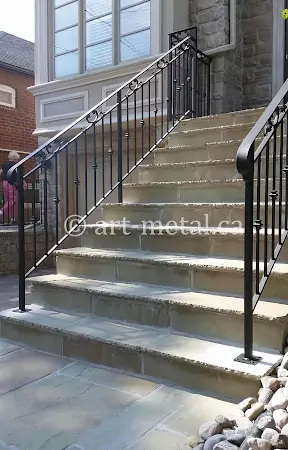
While homeowners frequently tend to their gardens and landscape, they often overlook the metal elements such as railings, outdoor furniture, and gates. Learning how to prevent and treat rust is crucial to prolong the life of these items. Let’s delve into the details of rust prevention and keep your outdoor metals shining and rust-free.
Understanding Rust and Metals
Corrosion affects metals that contain iron, such as steel, leading to destructive rust formation. This happens when iron reacts with oxygen in the presence of moisture, forming iron oxide or rust. Unlike rust, the green patina formed on copper through a similar process serves as a protective layer, preserving the metal underneath.
Corrosive and Non-corrosive Metals
Corrosive Metals:
- Iron: Susceptible to rust when exposed to oxygen and moisture.
- Steel: Although stronger, it has a high risk of rust due to its iron content.
Non-corrosive Metals:
- Stainless steel: This alloy contains iron and at least 18% chromium, forming a protective layer that resists rust.
- Aluminum: Popular for its lightweight nature and resistance to corrosion, due to limited iron content.
- Galvanized steel: This is carbon steel coated with a thin layer of zinc, providing temporary protection from rust.
- Copper or brass: The patina that forms and turns green over time, protects the underlying copper from further corrosion, making it an effective, albeit expensive, option.
Proactive Steps to Prevent Rust on Outdoor Furniture and Railings
- Use Coated Metals: Items with baked-on enamel or powder-coated surfaces offer greater longevity. They are less vulnerable to peeling and flaking. Consider painting your metal items with an exterior-grade paint designed for metal surfaces.
- Galvanize Your Metal: Protect steel and iron from rust by coating it with zinc. Although this form of galvanization may not be as durable, it’s a good way to safeguard structures that aren’t subjected to excessive physical contact.
- Apply Cold or Hot Bluing: This technique prevents rust by oxidizing the metal surface to create a protective layer. However, note that this process changes the color of the metal, leaving a unique blue patina.
- Practice Regular Maintenance: The secret of making your metal furniture last is regular cleaning. Thorough wash-downs twice a year using a warm water and liquid detergent mixture helps. Gently scrub the hard-to-reach areas with an old toothbrush and ensure to dry off the water after cleaning.
- Promptly Treat Rust-Prone Areas: Upon spotting any rust signs, act immediately. Sand the rust away lightly using fine-grit sandpaper, clean off any residual grit, apply a metal primer, and finish with metal-specific paint.

Conclusion
Despite our best efforts, rust and corrosion might still occur. Understanding metal’s behavior and practicing preventive measures can significantly delay rust generation. Through consistent care and timely intervention, your outdoor furniture and railings can retain their aesthetics and durability for a longer period.Contact us now!

 Chat
Chat 








